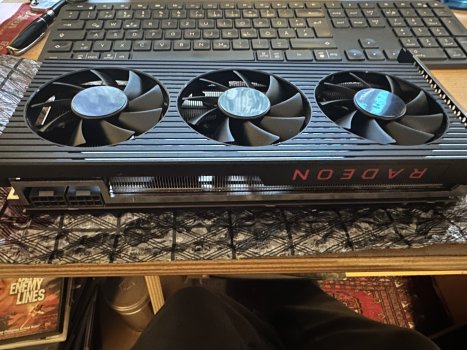Hi guys,
Once in while I need some advice from the real Professionals like you to help me out when it comes to a system OSX complete swap. I would be incredible thankful if one of you could give me your opinion and advice on this.
Here is a short description of my baseline right now:
As you can see in my signature, I have tried to do my homework to prepare OpenCore installation. What's kind of unique in my case is the fact that I have a flashed RX580 from MVC that provides boot screen. I need that because of a Windows 10 installation. I have installed the Windows 10 about three years ago, which worked absolutely flawless as well. I have an unused Pixlas Mod installed and I do run a flawless Catalina that was installed via DosDude1 patcher.
The Windows10 install was installed with some kind of iMacPro spoof in the past. Since I need to keep the system as save and durable as possible, I have kept an old Mojave install (from 4 years ago) as well.
My planed installation procedure:
As described in Post#1 there are multiple ways to install OC. Since I am not a software expert, the OCLP seems most attractive to me. At this time I have prepared a ready to use OCLP USB stick to start an installation with Monterey 12.6.2 I believe. To be save, I have backed up my current Catalina OSX install with a brand new TimeCapsule spars bundle (2,7TB)
Questions:
1. For those that have deep knowledge, would you consider the OCLP route as a good and save way to install, or would you recommend to use a different method for a software noob like me?
2. If fire up the installation procedure with that prepared USB stick, I do assume that Monterey 12.6.2 will be installed and my Catalina will be overwritten. That would be my desired outcome. However, I could also put it on the old Mojave and overwrite that to keep Catalina for the time being. Possible, but I would prefer to replace Catalina.
Hardware considerations:
The number 1 reason to switch from Catalina to Monterey is a new hardware swap that I want to do, once OCLP is installed. I have snatched up an old Alienware AMD 6800XT two slot card. Since I have not PC to do Syncretics bags to tricks myself, I have sent this baby to Poland to MVC for the correct flash. Its already back, and I would like to install it once the Monterey OCLP install was successful. Since I bother with hardware, I have also gotten a flashed Titan Ridge card that would be fitted together with the GPU.
Resulting questions:
I assume the OCLP install will have a kind of hardware scan an will build the configuration file during install. This could mean, it would be better to put the Titan Ridge in the system already before firing up the OCLP process.
The time capsule back-up did not backup my Windows10 (it can't) I do assume that I will be able to boot into Windows after the OCLP has been performed. However this is an assumption. Can you confirm that, or will I find some landmines in the sand and it might not be bootable somehow? Is there anything I would need to do to make sure my Windows10 Install will be save?
No Backwards compatibility question:
Since the AMD 6800XT dual slot card will not be compatible with Catalina and Mojave, (missing drivers) this will be a one way road. Because of that, I would like to install Monterey onto the Catalina Slot#2 SSD. Once I have proof that the new install works, I can also delete the old Mojave and free up more disk space and also sell the RX580 later on.
However, sometimes in the distant past I had problems to install on PCIe cards. Apple usually makes it easier to install onto SATA SSDs and troubles around with fast PCIE SSD cards. Will this be a problem?

Reading this as professional, what kind of risk will I be exposed to? Reading manny posts, I should be in good shape to do that update. However I just wanted to have your blessing if this can work or if I should change my approach or forget important aspects to the OCLP install. As a software noob, I'd like to rather not write my own script or plists or stuff like that, but you may have important advice to change my mind.
Thanks a lot in advance for your opinion and experience in this!
Marry Christmas
Alex


